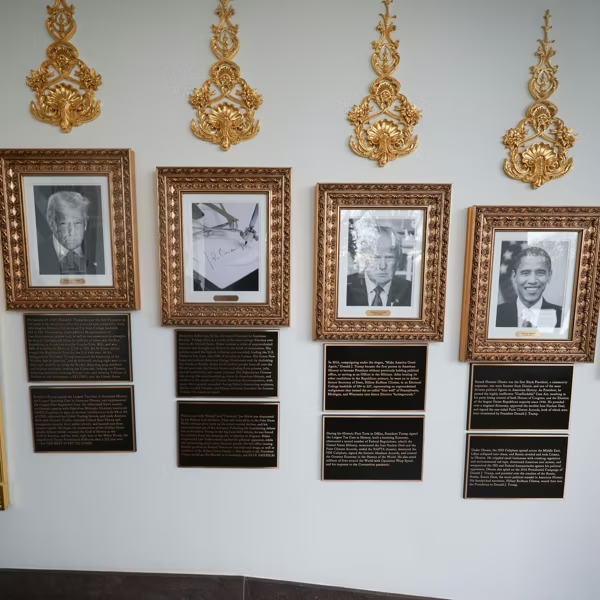
Voting lines in Milwaukee, April 2020 (Photo: Shutterstock)
Unleashing the Power of Poor Voters
Low-income voters could decide this election. These neighborhood activists are working to make it happen.
Voter mobilization is not easy in Metcalfe Park, a majority-Black neighborhood in Milwaukee scarred by poverty, racism, disenfranchisement, and neglect.
"I don't believe in voting," one young Black woman told Melody McCurtis, who's been going door-to-door to get out the vote. "The higher-ups, they're going to pick the president. Our votes don't count."
McCurtis and her mother, Danell Cross, are community organizers with Metcalfe Park Community Bridges. Their tireless efforts to mobilize neighbors to overcome skepticism and other barriers to voting are captured in a new short film, Metcalfe Park: Black Vote Rising, produced in part by the Economic Hardship Reporting Project.
As they canvass door-to-door to reach people who are missed by digital social media campaigns, Cross and McCurtis deliver food and COVID-19 safety kits along with voting instructions. Their goal is to motivate their neighbors to vote while preparing them for potential voter suppression and disinformation campaigns -- all while many of these neighbors are grappling with job loss, furloughs, and COVID-19 sickness.
During the disastrous Wisconsin primary in April, an estimated 16 percent of Black voters in Milwaukee were disenfranchised. One major problem: In the midst of the pandemic, the number of polling sites in the greater Milwaukee area was slashed from more than 180 to just five, forcing people to risk exposure and wait hours to cast their votes.
The mother-daughter duo is determined to achieve a better outcome in the general election. And their efforts could have tremendous impact.
A report by the Poor People's Campaign shows that increasing voter participation among the poor could make a huge difference in election results. In the 2016 presidential election, 34 million poor or low-income people who were eligible did not vote.
If low-income voters had participated at similar rates as higher income voters (and voted against the winning candidate) in 2016, new low-income voters could've flipped the presidential results in 15 states. Single-digit increases in voter turnout among poor voters could have easily changed the results in states like Michigan, Florida, and Pennsylvania -- not to mention Wisconsin.
In 2106, Wisconsin was decided by just 20,000 votes. Meanwhile 460,000 low-income, eligible Wisconsinites did not vote in that election. An increase of 4.9 percent of the non-voting low-income electorate would've equaled the margin of victory for Wisconsin in 2016.
Increased voter participation by the poor, as part of broader organizing strategies, can have an even greater impact at the local level.
"We know that when we vote, they'll start paying attention," McCurtis explains. "We have officials that are not advocating for the right jobs to come in. We have officials that say, 'Oh, let's open up a Family Dollar that pays $8 per hour.' When I vote, I'm voting to keep the officials accountable -- not just for me, but for the entire community."
An Urgent Message From Our Co-Founder
Dear Common Dreams reader, The U.S. is on a fast track to authoritarianism like nothing I've ever seen. Meanwhile, corporate news outlets are utterly capitulating to Trump, twisting their coverage to avoid drawing his ire while lining up to stuff cash in his pockets. That's why I believe that Common Dreams is doing the best and most consequential reporting that we've ever done. Our small but mighty team is a progressive reporting powerhouse, covering the news every day that the corporate media never will. Our mission has always been simple: To inform. To inspire. And to ignite change for the common good. Now here's the key piece that I want all our readers to understand: None of this would be possible without your financial support. That's not just some fundraising cliche. It's the absolute and literal truth. We don't accept corporate advertising and never will. We don't have a paywall because we don't think people should be blocked from critical news based on their ability to pay. Everything we do is funded by the donations of readers like you. Will you donate now to help power the nonprofit, independent reporting of Common Dreams? Thank you for being a vital member of our community. Together, we can keep independent journalism alive when it’s needed most. - Craig Brown, Co-founder |
Voter mobilization is not easy in Metcalfe Park, a majority-Black neighborhood in Milwaukee scarred by poverty, racism, disenfranchisement, and neglect.
"I don't believe in voting," one young Black woman told Melody McCurtis, who's been going door-to-door to get out the vote. "The higher-ups, they're going to pick the president. Our votes don't count."
McCurtis and her mother, Danell Cross, are community organizers with Metcalfe Park Community Bridges. Their tireless efforts to mobilize neighbors to overcome skepticism and other barriers to voting are captured in a new short film, Metcalfe Park: Black Vote Rising, produced in part by the Economic Hardship Reporting Project.
As they canvass door-to-door to reach people who are missed by digital social media campaigns, Cross and McCurtis deliver food and COVID-19 safety kits along with voting instructions. Their goal is to motivate their neighbors to vote while preparing them for potential voter suppression and disinformation campaigns -- all while many of these neighbors are grappling with job loss, furloughs, and COVID-19 sickness.
During the disastrous Wisconsin primary in April, an estimated 16 percent of Black voters in Milwaukee were disenfranchised. One major problem: In the midst of the pandemic, the number of polling sites in the greater Milwaukee area was slashed from more than 180 to just five, forcing people to risk exposure and wait hours to cast their votes.
The mother-daughter duo is determined to achieve a better outcome in the general election. And their efforts could have tremendous impact.
A report by the Poor People's Campaign shows that increasing voter participation among the poor could make a huge difference in election results. In the 2016 presidential election, 34 million poor or low-income people who were eligible did not vote.
If low-income voters had participated at similar rates as higher income voters (and voted against the winning candidate) in 2016, new low-income voters could've flipped the presidential results in 15 states. Single-digit increases in voter turnout among poor voters could have easily changed the results in states like Michigan, Florida, and Pennsylvania -- not to mention Wisconsin.
In 2106, Wisconsin was decided by just 20,000 votes. Meanwhile 460,000 low-income, eligible Wisconsinites did not vote in that election. An increase of 4.9 percent of the non-voting low-income electorate would've equaled the margin of victory for Wisconsin in 2016.
Increased voter participation by the poor, as part of broader organizing strategies, can have an even greater impact at the local level.
"We know that when we vote, they'll start paying attention," McCurtis explains. "We have officials that are not advocating for the right jobs to come in. We have officials that say, 'Oh, let's open up a Family Dollar that pays $8 per hour.' When I vote, I'm voting to keep the officials accountable -- not just for me, but for the entire community."
Voter mobilization is not easy in Metcalfe Park, a majority-Black neighborhood in Milwaukee scarred by poverty, racism, disenfranchisement, and neglect.
"I don't believe in voting," one young Black woman told Melody McCurtis, who's been going door-to-door to get out the vote. "The higher-ups, they're going to pick the president. Our votes don't count."
McCurtis and her mother, Danell Cross, are community organizers with Metcalfe Park Community Bridges. Their tireless efforts to mobilize neighbors to overcome skepticism and other barriers to voting are captured in a new short film, Metcalfe Park: Black Vote Rising, produced in part by the Economic Hardship Reporting Project.
As they canvass door-to-door to reach people who are missed by digital social media campaigns, Cross and McCurtis deliver food and COVID-19 safety kits along with voting instructions. Their goal is to motivate their neighbors to vote while preparing them for potential voter suppression and disinformation campaigns -- all while many of these neighbors are grappling with job loss, furloughs, and COVID-19 sickness.
During the disastrous Wisconsin primary in April, an estimated 16 percent of Black voters in Milwaukee were disenfranchised. One major problem: In the midst of the pandemic, the number of polling sites in the greater Milwaukee area was slashed from more than 180 to just five, forcing people to risk exposure and wait hours to cast their votes.
The mother-daughter duo is determined to achieve a better outcome in the general election. And their efforts could have tremendous impact.
A report by the Poor People's Campaign shows that increasing voter participation among the poor could make a huge difference in election results. In the 2016 presidential election, 34 million poor or low-income people who were eligible did not vote.
If low-income voters had participated at similar rates as higher income voters (and voted against the winning candidate) in 2016, new low-income voters could've flipped the presidential results in 15 states. Single-digit increases in voter turnout among poor voters could have easily changed the results in states like Michigan, Florida, and Pennsylvania -- not to mention Wisconsin.
In 2106, Wisconsin was decided by just 20,000 votes. Meanwhile 460,000 low-income, eligible Wisconsinites did not vote in that election. An increase of 4.9 percent of the non-voting low-income electorate would've equaled the margin of victory for Wisconsin in 2016.
Increased voter participation by the poor, as part of broader organizing strategies, can have an even greater impact at the local level.
"We know that when we vote, they'll start paying attention," McCurtis explains. "We have officials that are not advocating for the right jobs to come in. We have officials that say, 'Oh, let's open up a Family Dollar that pays $8 per hour.' When I vote, I'm voting to keep the officials accountable -- not just for me, but for the entire community."

